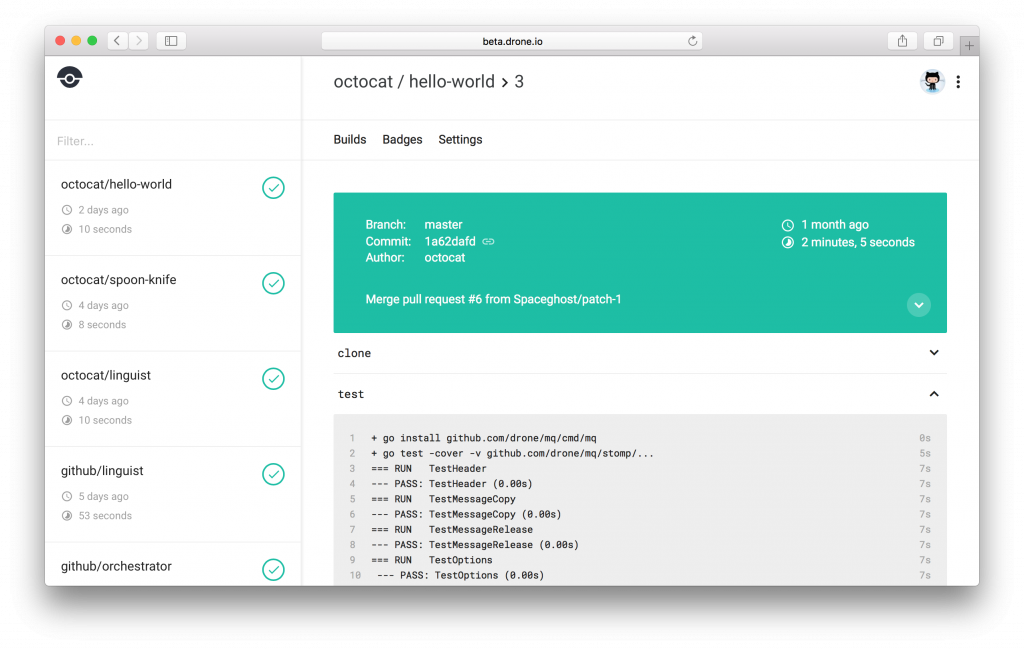Drone.io Adds Arm Support to CI/CD Platform
Drone.io, provider of an open source continuous integration/continuous development (CI/CD) platform optimized for building containers, has added support for Arm-based systems as part of an effort to facilitate the building of internet of things (IoT) applications.
Company founder Brad Rydzewski says support for systems based on Armv7-A and Armv8-A will make it possible to build and test IoT applications on both Arm and Intel-based systems.
While Intel-based systems today dominate inside the data center, Rydzewski notes Arm processors are the most widely employed in embedded systems. As developers move to create IoT applications it’s probable most of those applications will span Arm processors at the endpoint connected to Intel-based systems residing in a data center or in a public cloud, he says.
Unlike other platforms, the Drone.io CI/CD platform is designed to be deployed and managed by developers, he says. As developers take over more responsibility for building and deploying applications within a DevOps processes, most developers don’t want to be held up by a series of checks that have to be approved by an IT operations teams. In fact, because Drone.io is an open source platform, Rydzewki says it’s not uncommon for developers to set up their own CI/CD platforms alongside those managed by the enterprise IT organization. Once an update flows through the Drone.io platform, the finished artifact is fed into the CI/CD platform managed by the internal IT operations team—an approach that eliminates a lot of unnecessary “red tape” for the developer, he says.
 As millions of dollars get poured into building IoT applications based on microservices architectures, Docker containers are being widely embraced as a lightweight approach to virtualization that makes it possible to deploy and update those applications regardless of where they need to run. Virtual machines tend to be too large to be employed on IoT endpoints effectively. The fundamental difference between IoT applications and software that runs on existing embedded systems is the frequency with which those applications need to be updated. Because IoT applications are essentially distributed, it makes more sense to build the entire application using containers capable of spanning all the Intel and Arm processors involved. In fact, Rydzewski notes that Raspberry Pii platforms based on Arm processors are already well on their way to becoming the dominant platform for IoT endpoints.
As millions of dollars get poured into building IoT applications based on microservices architectures, Docker containers are being widely embraced as a lightweight approach to virtualization that makes it possible to deploy and update those applications regardless of where they need to run. Virtual machines tend to be too large to be employed on IoT endpoints effectively. The fundamental difference between IoT applications and software that runs on existing embedded systems is the frequency with which those applications need to be updated. Because IoT applications are essentially distributed, it makes more sense to build the entire application using containers capable of spanning all the Intel and Arm processors involved. In fact, Rydzewski notes that Raspberry Pii platforms based on Arm processors are already well on their way to becoming the dominant platform for IoT endpoints.
Most organizations have yet to extend whatever they have in the way of DevOps processes to IoT applications. But given the inherent complexity associated with building and maintaining those applications, it’s only a matter of time before they do. Drone.io is clearly betting these greenfield applications represent an opportunity to establish a beachhead before larger rivals. As part of the bet, Drone.io is targeting developers because it’s not yet clear how much control internal IT operations teams will be able to exercise over IoT applications. Large swaths of existing embedded systems are managed by operational technology (OT) teams that tend to report directly into lines of businesses, and many of those teams might not yet even know what containers and DevOps are. But the one thing that is for sure is their tolerance for applications that are difficult to build and maintain already is famously low.




